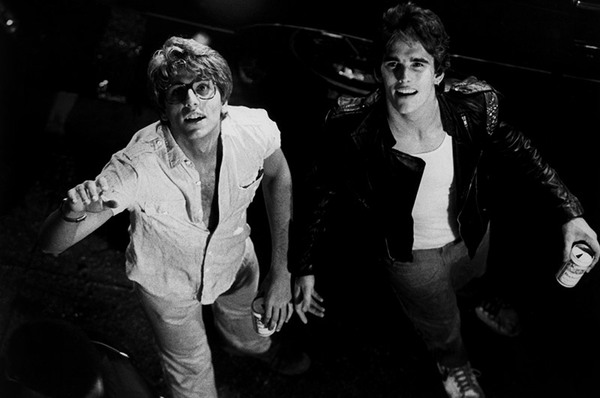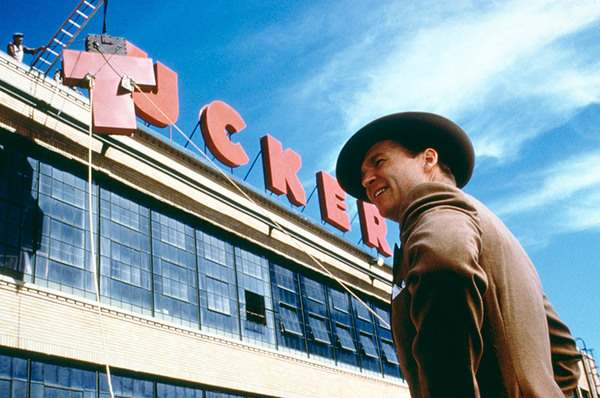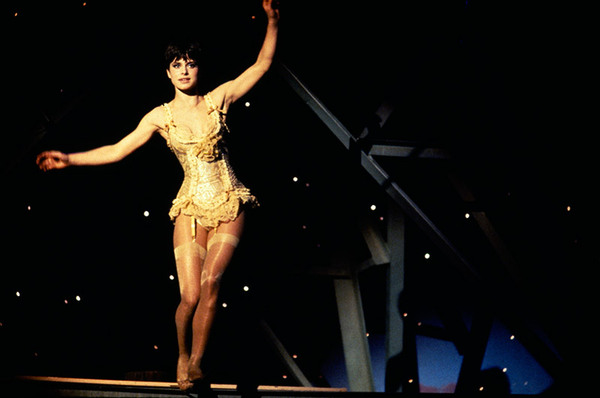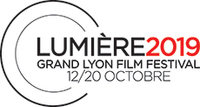3 days until the Lumière Award ceremony
Francis Ford Coppola’s 3 obsessions
PostED ON OCTOBER 15 AT 11AM
Like all great filmmakers, Francis Ford Coppola has worked on certain cinematographic themes to the point of inspired obsession…
Coppola… silent!
Coppola loves silent cinema; the more he gets to know it, the more excited he is about incorporating it. Thus, works like Bram Stoker’s Dracula (1992), Tetro (2009) and Rumble Fish (1983) illustrate his fascination for the aesthetics of silent film. In particular, German expressionism, which alternates absolute terror with huge shadows on frightening characters (like Count Dracula intimidating his enemies) and sublime poetic melancholy of men’s faces observing the world (like how Rusty James looks at his big brother or how Tetro gazes at his little brother). The visceral gestures of these men are so powerful that these movies could almost exist without sound.
 Rusty James (1983)
Rusty James (1983)
Coppola… tech geek!
Coppola is crazy about new technologies. He was the first to talk about digital video and its potential in enthusiastic interviews. Lucky thing - advances on technological devices have been graphic and cinematic! The Conversation (1974) One from the Heart (1982) or Tucker: The Man and His Dream (1988) are films marked by relations to the machine, its invention, and what it can do. The Conversation’s protagonist is a robot-man who spies on the sounds made by everyone around him. One from the Heart was shot with Coppola locked in a control room, commanding his film like a man testing a new experiment. Tucker: The Man and His Dream is the culmination of all this, focused on a hero who creates a machine, a wonderful automobile. Behind the technology lies the idea that we must not stop progress for looming sordid financial reasons. A metaphor for Coppola's fate as a filmmaker.
 Tucker : The Man and His Dream (1988)
Tucker : The Man and His Dream (1988)
Coppola… to music!
Coppola comes from a family of musicians, including his father, composer Carmine. And at the Coppolas, the family is sacred. If you know The Godfather (1972) and the Apocalypse Now soundtracks by heart, you must hear the disturbing piano solo of The Conversation, composed by David Shire (Coppola’s brother-in-law). Coppola goes even further musically with three films that flirt with the musical: One from the Heart (1982), Peggy Sue Got Married (1986), and The Cotton Club (1984), featuring musical scores by Tom Waits and John Barry! For Coppola, music is eternal; it crosses the ages, another great obsession of the director, who makes Peggy Sue travel from one era to another, has The Cotton Club jazz musician shift from an underworld universe to a world of art, or finally, how the protagonists of One From the Heart slip from reality into fantasy.
Coppola vient d’une famille de musiciens, dont son père est le compositeur Carmine. Et chez Coppola, la famille c’est sacré. Si on connaît par cœur les B.O. du Parrain (1972) et d’Apocalypse Now, il faut redécouvrir le solo perturbant au piano de Conversation secrète, composé par David Shire (le beau-frère de Coppola). Coppola va encore plus loin en musique avec notamment trois films qui flirtent avec la comédie musicale : Coup de cœur (1982), Peggy Sue s’est mariée (1986), et Cotton Club (1984), soit des partitions de Tom Waits et John Barry ! Pour Coppola, la musique est éternelle, elle traverse le temps, une autre grande obsession du réalisateur qui fait voyager Peggy Sue d’une époque à une autre, ou le musicien de jazz de Cotton Club d’un univers de pègre à celui de l’art, ou enfin les héros de Coup de cœur de la réalité au fantasme.
 One from the Heart (1982)
One from the Heart (1982)
Virginie Apiou

